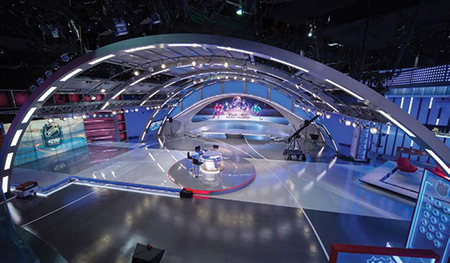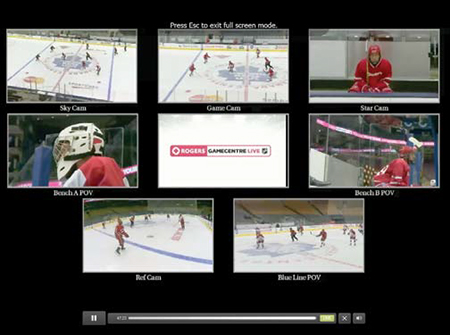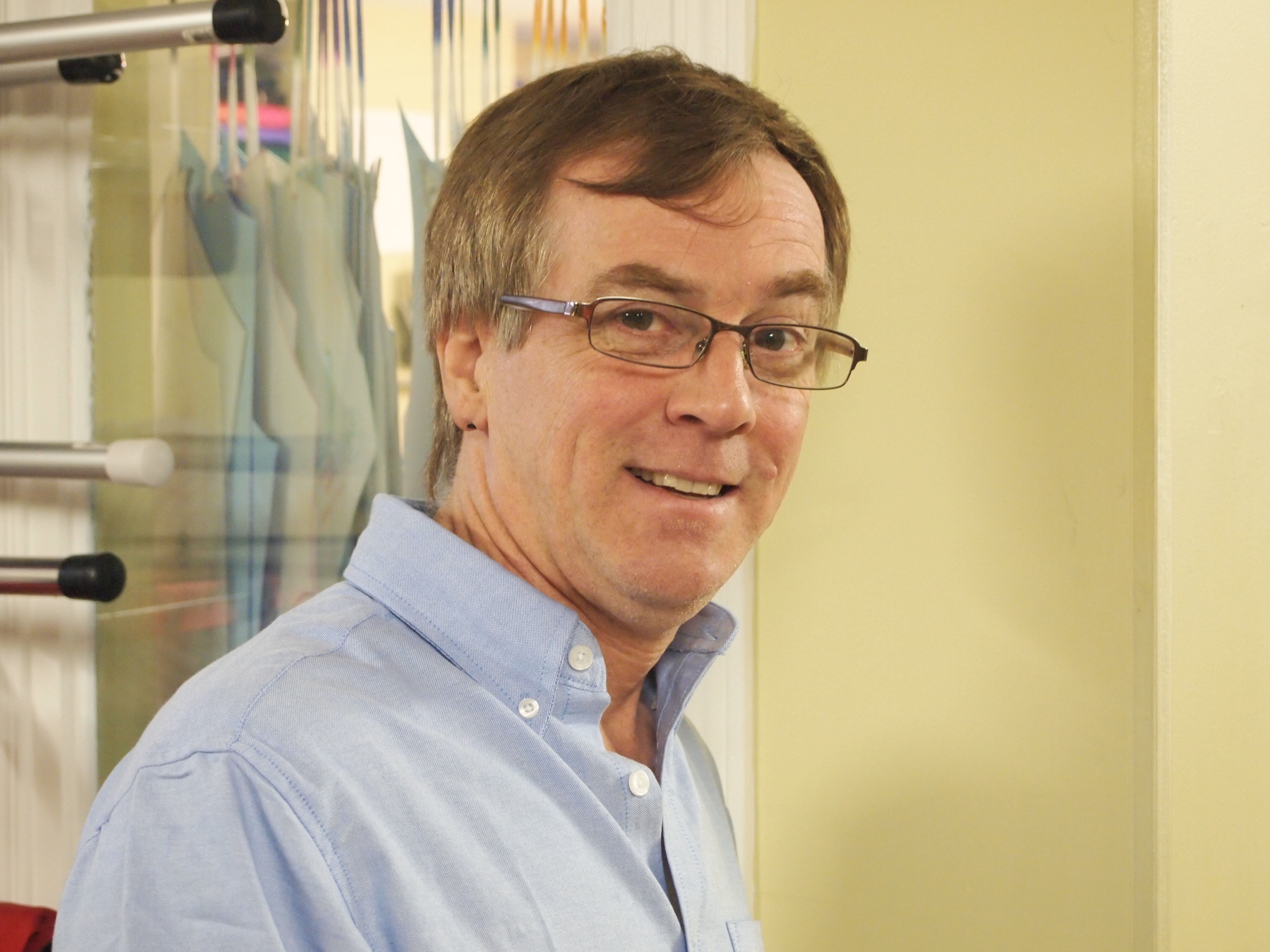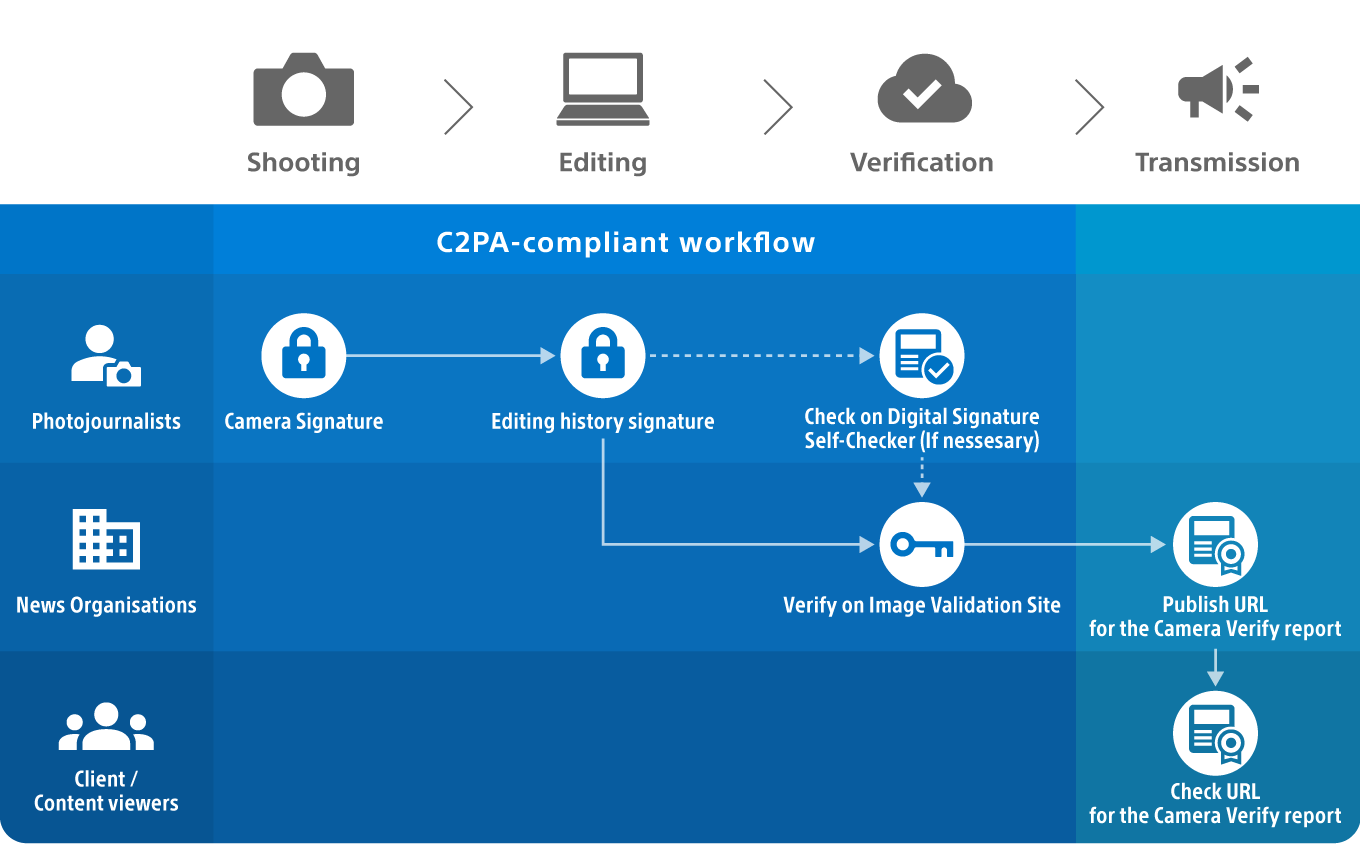Rogers Brings NextGen NHL Coverage to Canada

The new space-age 11,000 square-foot “Hockey Central Studio” cost $4.5 million to build and is located on the 10th floor of CBC’s Toronto broadcast facility.TORONTO—Rogers Communications has a lot of exciting plans for covering NHL hockey over the next 12 years, after paying the league $5.2 billion to win the “Hockey Night in Canada” rights away from CBC-TV. The plans, which were unveiled in a press event in Toronto last month, include a range of new camera angles, a glitzy new broadcast studio, live streaming of 1,000 NHL games—much more than will be available on TV—and a comprehensive second screen app known as GamePlus.
The catch: Although Rogers’ HNIC broadcasts over CBC (which has a deal to carry some of the Rogers-produced games but not earn ad revenue from them) and Rogers’ own broadcast/cable TV properties will be slick and informative, access to Rogers’ NHL GameCentre LIVE streaming site will not be free. Instead, it will cost $199.99 for the 2014-2015 NHL season.
Canadians who already subscribe to Rogers’ cable TV, Internet, and/or mobile/landline phone service will get free access to NHL GameCentre Live to the end of 2014. They will also be able to use Rogers’ GamePlus second screen app. It is an impressively sophisticated mix of unusual camera angles and replay controls that represents the best of what Rogers is offering in its NHL coverage—and a tantalizing enticement to hockey-mad Canadian nonsubscribers to switch TV providers and Internet/telephone providers.

Rogers’ new GamePlus app allows users to switch among a range of unusual camera angles while watching the game.GAMEPLUS
Without a doubt, it was the GamePlus app that captured the most media attention, and with good reason: The features offered by this second-screen application are nothing short of astounding.
For instance, GamePlus users will be able to switch among a range of unusual camera angles while watching the game. These angles will include the SkyCam, a suspended robotic camera that will follow the play from end to end by racing along with it; the StarCam, that will allow viewers to watch one star player throughout the game at all times, and the helmetmounted RefCam. Yes, NHL refs will now be wearing helmet-mounted cameras and wireless transmitters, so that their careening perspectives can be broadcast back to eager GamePlus viewers.
Rogers is also adding POV cams at the blue lines and inside the players’ benches, plus Goal Line Cams that will provide overhead views of the goal creases. All of these views will be switchable by Game-Plus users.
GamePlus’ second big feature is called MyReplay. Within three minutes of major plays taking place, MyReplay will provide viewers with online access to multiple replay angles. This will allow GamePlus users to critique every goal, power play, and penalty kill; enhancing a favorite pastime of Canadian hockey fans—second-guessing the ref.
The professional video industry's #1 source for news, trends and product and tech information. Sign up below.
“This is a game-changer,” said Keith Pelley, president of Rogers Media and host of the company’s October media event. “It puts customers in control and gives them access to angles they’ve never seen before.”
SPACE AGE STUDIO
The unveiling of the GamePlus app is the second jab in Rogers’ HNIC one-two PR punch to woo and wow Canadian hockey fans. The first was the new 11,000 square-foot HNIC studio, which was shown to the public in late September. Built for $4.5 million on the 10th floor of CBC’s Toronto broadcast facility—CBC had the available studio space; Rogers didn’t—the “Hockey Central Studio” features a 38-foot by 11-foot 4K HD display aptly nicknamed “Goliath.” Made up of 170 individual panels, Goliath is the largest such studio display in Canada.
The Hockey Central Studio has nine sets, ranging from interview spaces to a main anchor desk with a 360-degree open space that can be shot from any angle. Mindful of Rogers’ goal of pumping out hockey games throughout the week, this studio can be used to cover three live games simultaneously. (To save space, two of the sets are stacked on top of each other.) Hockey Studio Central is equipped with:
• 14 HD cameras
• 24 wireless microphones
• 52 total screens
• 500 studio lights
• 40,000 feet of electrical cable
“We wanted to get away from the traditional desk, where there are four people on it and they are all that you see,” said Gord Cutler, Rogers’ senior vice-president of hockey production.
Indeed, among the new studio’s facilities is a floor space that can be turned into a mock hockey rink—sans ice—so that new HNIC host George Stromboulopulos and staff can literally demonstrate specific plays right on air.
HIGH EXPECTATIONS
Rogers’ multiscreen strategy for covering hockey is bigger and more ambitious than CBC-TV’s approach, which was traditionally anchored on its Saturday night HNIC TV broadcasts. But despite all these changes, former NHL great/Rogers’ “ambassador” Mark Messier isn’t worried about the new HNIC losing the appeal of the old.
“Saturday night hockey has always been an institution in our country,” said Messier during the October event. “I don’t think that’ll ever change.”
One change that Rogers would like to see is a boost to its subscriber base and overall revenues, thanks to the advent of GamePlus and live game streaming.
It needs the boost: soft TV advertising revenues, combined with stiffening competition in Canada’s cable/satellite TV and wireless sectors, resulted in Zacks Investment Research downgrading Rogers Communications’ stock to “sell” in late September, after the company’s disappointing Q2 2014 results.
With $5.2 billion payable to the NHL over 12 years, Rogers needs its NHL gamble to pay off, big time.
James Careless is an award-winning journalist who has written for TV Technology since the 1990s. He has covered HDTV from the days of the six competing HDTV formats that led to the 1993 Grand Alliance, and onwards through ATSC 3.0 and OTT. He also writes for Radio World, along with other publications in aerospace, defense, public safety, streaming media, plus the amusement park industry for something different.

